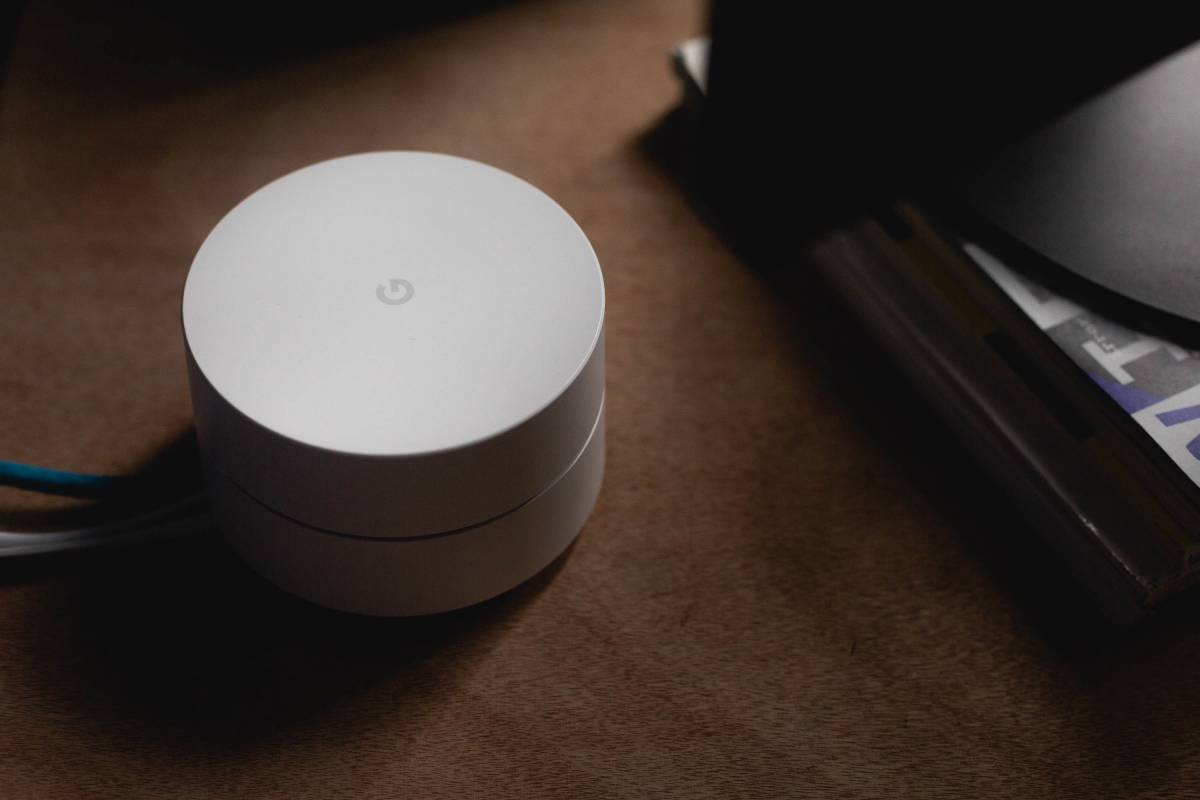Internet speeds are faster today than they’ve ever been. As of 2018, the average Internet speed in the US is 39.8 Mbps — more than double what it was two years ago.
Your reality may be very different, however. There’s a good chance you aren’t getting anywhere near those speeds from your ISP. The most likely reason is that those aggregated numbers don’t often reflect the reality that many consumers experience with their internet. The FCC’s 2018 report on broadband access found that 24 million Americans still can’t access internet speeds of at least 25 Mbps down, the current FCC benchmark.
If you’re trying to run a wireless network in your home with an already-slow Internet connection, you’re going to discover a significant number of issues on a regular basis, from buffering during video streams, to slow web browsing and page loading.
There are some solutions to help optimize Wi-Fi on a slow internet connection, however. Let’s explore a few methods you can use to help preserve your Wi-Fi speeds as much as possible.

Overview: What is slow internet speed?
You may be wondering what really qualifies as “slow” internet speed. Answering that question requires a basic understanding of two key concepts:
- Internet data speeds as measured by Megabits per second (Mbps)
- Bandwidth
These two related topics are key when it comes to solving your slow internet issues.
Internet Speed in Mbps
The speed you get through your ISP is currently measured in “megabits per second”, or Mbps. That’s a measure of how many millions of bits of data you can download or upload per second. This may change in the future as Gigabit internet speeds both take off and increase in availability. For now, however, Mbps is the standard measure.
Video streaming offers an easy measure to determine whether your internet speed is slow or fast. Netflix, the current reigning champion in the video streaming world, offers the following suggestions for streaming video through its site:
| QUALITY | SPEED |
|---|---|
| Minimum Requirement | 0.5 Megabits per second |
| Recommended Speed | 1.5 Megabits per second |
| Recommended for SD | 3 Megabits per second |
| Recommended for HD | 5 Megabits per second |
| Recommended for UHD | 25 Megabits per second |
What this means is that if your internet speed is slower than 0.5 Mbps, you won’t be able to use Netflix at all. If you do use Netflix at those speeds, your videos will likely buffer significantly and will display in poor quality. 1.5 Mbps will get you less buffering, but you’ll still experience poor quality video. You need at least 3 Mbps to stream SD-quality video from Netflix.
Even Netflix isn’t a perfect measure here. Anything less than 1 Mbps is considered extremely slow, but even 25 Mbps is going to be troublesome if you have multiple devices connected to your Wi-Fi.
Bandwidth
25 Mbps is often stated as a benchmark speed. Even if you get that much, though, bandwidth problems may be the root cause of your slow Wi-Fi connection.
Think of bandwidth like a busy highway. The more cars you have on the road, the slower the speed is for everyone as all of the cars are crowded for space. Even if the speed limit is 50 MPH, if there are too many cars on the road nobody is going to be able to achieve that speed. You might be lucky to get 10 MPH during heavy traffic.
Additionally, unless you’re using a top-of-the-line Wi-Fi router, you do lose a notably large amount of your internet speed when you broadcast it through a router. Depending on a few factors, such as your router’s technology, signal strength, and distance of your Wi-Fi connected devices from the router, you could see speed losses of 30 percent or more.
That’s a huge hit for an already-slow internet connection. Combine that with multiple devices on the network, and you can start to see why slow Internet can suffer heavily with multiple users or devices on the network. It’s like diverting highway traffic to a single-lane road.
Now that you understand the issues surrounding your slow Wi-Fi, let’s explore a few easy ways to squeeze more Mbps from your connection.
How to Fix Slow Wi-Fi
There are several ways to optimize your Wi-Fi on a slow internet connection, many of which are free. We recommend trying your hand at each before using any methods that require spending money.
We also recommend that you reset your router first before attempting any fixes. As with most devices, your router stores data in its memory. A loaded cache of data in your router’s memory can cause your internet to slow down. A router reset will clear the cache and may help increase your internet speed.
1. Wire Devices with Ethernet
Keeping in mind that you lose some speed from your internet connection when you use a Wi-Fi router, you can help preserve some of your bandwidth by wiring more of your devices.
Of course, not every device can be wired through Ethernet. Some devices, such as your smartphone, don’t have Ethernet ports. And if you’re trying to optimize Wi-Fi for smart home tech, like the Nest Thermostat or the Ring Video Doorbell, you may still be forced to use Wi-Fi instead of wired connections.
If you have TVs, computers, or other large devices that have Ethernet ports, consider switching them to a wired connection. Save the Wi-Fi signal for your devices that require one such as your security system.
2. Relocate Your Router
Where is your Wi-Fi router located? Maybe on the far side of your home, in a closet? If so, there’s a good chance your devices are struggling to receive an effective connection. Wi-Fi signals, like any radio signals, can be impacted by obstacles such as walls, metal objects, or other signal broadcasting.
Especially if you have a larger home, you may want to place your Wi-Fi router in a more central location. This will help to reduce the distance your signal needs to travel to get to your Wi-Fi-enabled devices. It should also reduce the number of potential obstacles that might degrade the signal.
3. Avoid VPN Usage
I’ve used different VPNs, both for work and security. Private Internet Access slows down my connection, as do other popular VPNs like ExpressVPN or NordVPN. Because of how VPNs work, by routing your connection through multiple layers of security, each will cause an internet speed reduction that can be significant at times. It is worth noting that some of the best VPNs don’t slow the connection significantly, so be sure to check how much slower your internet speed is when using a VPN.
If you have a slow internet connection already, using a VPN is just going to cause problems. Until you’re able to increase your internet speed to something better than 25 Mbps down, you may want to reconsider going without a VPN.

4. Use a Mesh Network Router
A regular router may not cut it, especially for larger homes. You may need to switch to what is known as a mesh network router. These routers create a “mesh” network around your home, bouncing your Wi-Fi signal across your home using a network of Wi-Fi repeaters situated throughout your house. Unlike normal Wi-Fi extenders, mesh network routers have little to no signal strength loss.
There are also a growing number of highly-effective systems on the market, such a Plume or Google Wi-Fi.
Barring that, there are other Wi-Fi signal solutions, including “powerline” extenders that typically create separate, cloned versions of your Wi-Fi network using extending devices that transfer your signal through your home’s electrical wiring. You simply plug the devices into one of your home’s power sockets, the data signal is transferred through your electrical wiring.
Powerline adapters create a stronger signal in different rooms than normal extenders, but there’s a potential drawback. If you’re running a smart home, any device connected to a cloned version of your network cannot speak to other devices since they’re technically on a different network. It’s possible that not all powerline networking devices will do this, so you’ll need to check the specs carefully before you consider buying one.
5. Purchase a New Regular Router
If you don’t find a mesh network to be necessary (or realistic) for your home, it may be time to upgrade your regular router to a more advanced version.
Router technology and communication standards change regularly. Ask yourself these questions:
- How old is my router?
- How much did I pay for it?
These questions are important. Older routers may not feature the latest Wi-Fi technology that allows for greater signal strength and support for multiple devices. There’s no magic number here for how old is too old. If your router is pushing 5 years or more, it’s likely time to upgrade.
The price you paid for your current router is also important. The old principle of “you get what you pay for” comes into play here. Cheaper routers tend to use outdated Wi-Fi standards as well as produce weaker signals. They also tend to struggle more when it comes to handling multiple connected devices. Meanwhile, more expensive routers more commonly use the top-of-the-line technology that produces better results.
You don’t have to purchase the most expensive router on the market. But you will want to consider whether a new router at any cost is a good option for you. Just make sure it’s actually a new model before you pull the trigger on a potential purchase.
Still Having Slow Internet Problems? Speak to Your ISP
You will hopefully find that one of the above solutions works to optimize your Wi-Fi. If not, you may need to speak to your ISP, as there’s a chance you’re either not getting the speeds you’ve paid for, or you’ll need to upgrade to a more robust internet plan.
Your ISP can perform a network test on their end to determine whether there is a problem with the signal going to your modem. Problems can arise, and it’s possible for them to identify and fix any issues with slow internet speeds unrelated to your own devices or Wi-Fi network. However, you may also need to consider purchasing more internet speed from your ISP, if that’s an available option and one that you can afford.

